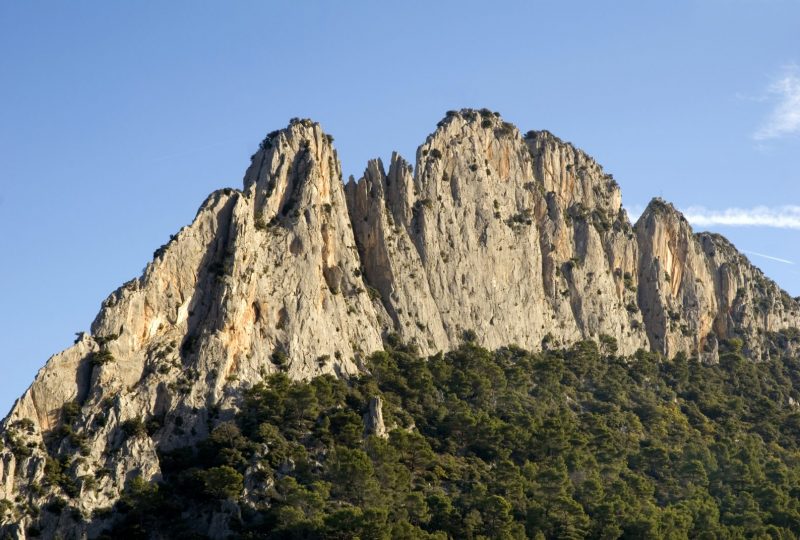A pretty village surrounded by olive groves and mountains, Buis-les-Baronnies, former capital of the Barons of Mévouillon, is known today as the home of the "honey tree": the lime tree.
Description
Like the olive tree, it was planted at the end of the 19th century after the vine was killed by phylloxera. Formerly known as the "Wall Street of linden" until a couple of decades ago, Buis-les-Baronnies has had to face competition from Eastern Europe and Asia. Although the linden fair no longer exists, linden harvesting is still celebrated at the beginning of June, and a major market, "Aromatiques et Tilleul en Baronnies", takes place in mid-July. But linden trees aren't the only thing on Buis' doorstep: Provence is also home to aromatic and medicinal plants such as lavender, thyme, rosemary, savory and sage. To discover their history and virtues, visit the Maison des Plantes aromatiques, a museum housed in an ancient medieval tower.
With its varied mid-mountain topography, Mediterranean climate and rich natural heritage, Buis-les-Baronnies is ideal for outdoor sports. The area offers a wide variety of cliffs, with climbing sites of all levels and accessible to all. It is also home to one of Europe's longest and most beautiful via ferrata. Between its olive groves, lavender fields, numerous orchards, marl fields, rolling hills and mountain trails, the area around the village offers numerous routes for hiking, horseback riding, cycling and mountain biking. Le Buis can also be discovered from the air: it's the perfect place for hang-gliding. The site offers some of the best aerology in France, with numerous take-off points. And if you want to go underground, there are plenty of places to go caving.
In addition to the pleasures of taste, smell and body, Buis-les-Baronnies is also home to two music festivals during the summer season: Les Sérénades in July and Parfum de Jazz in August.
Buis-les-Baronnies also boasts a number of buildings that bear witness to its medieval past and its rich commercial history: ramparts (13th-14th c.), Safre tower (14th c.), Ursulines chapel (17th c.), Place des Arcades (14th c.), Dominican convent, Notre-Dame de Nazareth church (13th-19th c.) and more. Take a stroll through the narrow streets, where you'll find quirky houses with gaudy facades, refreshing water fountains, isolated fragments of ramparts, 14th-century houses, vaulted passageways and a market square with arcades that becomes rich in smells and color on market days.
What to see
- Notre-Dame de Nazareth church (13th-19th c.)
- Galerie des Ursulines
- Renaissance doorway / 17th-century Ursuline chapel
- 14th-century ramparts
- Tour du Safre 14th century
- 14th-century market square / Place des arcades
- Dominican convent, 17th century
-Gendarmerie tower, 14th century
- Saint-Trophime chapel
- Maison des Plantes
- Catelan brothers' house
Things to do :
- Hiking
- Horse riding
- MOUNTAIN BIKING
- Cycle touring
- Climbing
- Via ferrata
- Hang-gliding
- Caving
Spoken languages
- French
Themes
- Historic patrimony
- Town / Village





